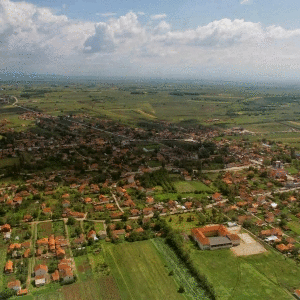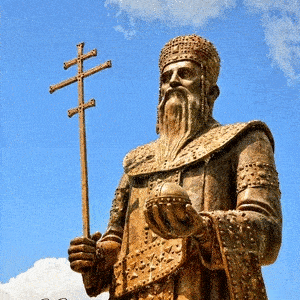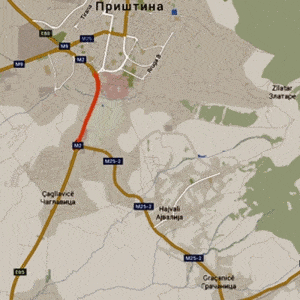Religious
Christmas
Christmas is celebrated on 7th of January. The celebration begins with Christmas day on 6th of January, and that morning host goes to cut the Christmas tree and most often it is an oak tree, and brings it into the home and thus marked the beginning of the Christmas celebration. In addition, dotted with various customs which are actually characteristic of our rich traditions, that preserved and fostered through the centuries. One of the most distinctive custom and ceremony is the burning of the Christmas tree, bringing the straw into the home and throw it on the floor. On the evening of January 6 on Christmas Eve, in the courtyard of Gracanica monastery begins the gathering of the inhabitants who attend the traditional burning of Christmas tree and this is another custom that is a part of this great holiday. The orthodox Serbs use the welcoming words on these days: “Christ is born”, “Indeed he is born”.
Easter
Easter is the greatest and most joyous Christian holiday. According to the folk custom on Easter is to paint the eggs. Easter egg symbolizes resurrection and formation of the life from the dead. The first Easter egg is kept for one year and it’s called home-guardian.
All Christians mark the Great Friday, the day when Jesus Christ was crucified on Golgotha. Christians believes that Jesus filed sacrifice of the crucifixion on the cross in order to settle the God and sinful humanity.
Instead of usual greetings, people greet each other with words: “Christ is risen”, and “Indeed he is risen”.
Vidovdan
Vidovdan is a religious holiday which celebrates Serbian Orthodox Church on 28th of June, and it is one of the greatest Serbian holidays. The significance of Vidovdan for the Serbian people stems from the historical events that are related to this date. Out of all the most important is the Kosovo Battle and death of Prince Lazar in 1389 when Serbian and Turkish army clashed, under the leadership of Prince Lazar, and the Turkish army under the leadership of Sultan Murat.
In Kosovo this holiday is celebrated under the great honor and ceremony, and in the framework of this festival various events are held in Gracanica, such as the: Art Colony, Vidovdan Poet Vigil (for more details see “Cultural Events”) and Kosovo Maiden Contest (for more details see “Events”.
Under the framework of this holiday, the religious services are held as well: holy liturgy in the courtyard of Gracanica monastery and memorial service to fallen soldiers in Kosovo Battle on Gazimestan.
Dormition of the Mother of God (Velika Gospojina or Gospodjindan)
Gospodjindan is one of the 12 greatest Christian holidays. Celebrates the Dormition of the Mother of God and thus ends a two-week dormition fasting. According to folk legend this holiday is known as Velika Gospojina and Gospodjindan (Dormition of the Mother of God).
Gospodjindan is always marked on 28th of August and is also known as the holiday of mothers and children. According to the belief its considered that mother of God lived in Jerusalem till the end of her life, surrounded by care of apostles and first Christian community. A large number of families celebrates this day as their own patron saint.
Serbian New Year (Julian calendar)
Serbian New Year is traditional Serbian holiday and it’s marked on 14th of January. A large number of Serbs mark this day on the similar was as the New Year on 1st of January. In Gracanica for the Serbian New Year Eve concerts are usually organized where the people gather in front of the Culture Center or in center of Gracanica. At the celebration people can enjoy in boiled rakija (brandy) and boiled vine, traditionally roasted pork and spit roasted ox. At the midnight the fireworks beatify the atmosphere, and besides the open celebration all restaurants individually organizes a celebration in its facilities.




